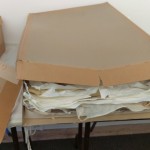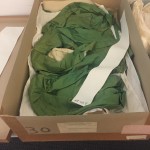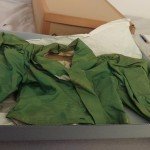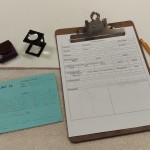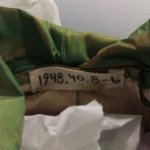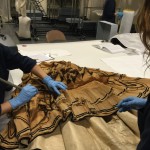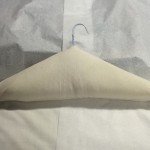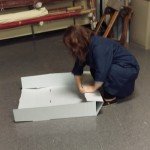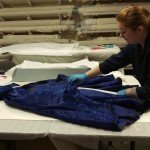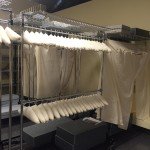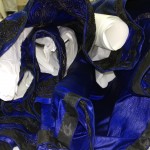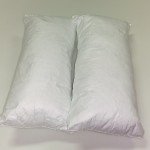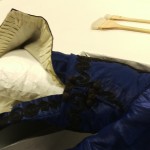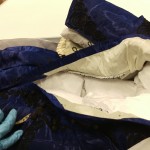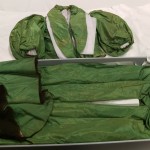Thinking Outside (and Inside) the Box: Our Process for Rehousing the Textile Collection
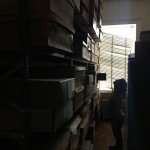 Here I am facing a daunting wall of garment boxes in Pratt House.
Here I am facing a daunting wall of garment boxes in Pratt House.
By: Lidia Plaza
Currently the entire costume collection is stored in historic Pratt House, which is itself in need of a conservation treatment. Although there have been previous attempts to keep the collection organized and preserved, the majority of the items have not been touched in decades are in dire need of a new home.
Learn more about our adventures in Pratt House in the blog post “The Enoch Pratt House”
Our process begins in Pratt House where we select our new batch of objects to rehouse. As there is no real system to the way items are housed currently, we are mostly pulling boxes at random, giving especial attention to things that are in damaged boxes or that might be particularly interesting.
Once safely out of Pratt House, our new batch of items gets taken to a temporary holding room where one by one each object is carefully taken out its old box and placed on a tray to be transported to our new housing space.
Next a detailed condition report is completed for the object as it is carefully inspected. During the inspection process we note any damage and make sure that the object has a tag with its accession number.
If in stable enough condition, each garment is vacuumed to remove harmful dust and debris that has accumulated after years of poor storage conditions. The vacuum is used at a low setting with a small brush attachment used to gently remove any soiling. Generally, there will be almost no visible change to the object, but the overall health of the textile is improved.
Finally it’s time to get a new home! If a garment has sturdy seams, we may choose to hang in the new hanging storage it on our specially made hangers. Otherwise, items are boxed. We use archival boxes in a variety of sizes, depending on the size of the object.
Tyvek® sheets are placed between each item in the box to facilitate easy removal of the objects if needed. Skirt folds are draped over rolls of acid-free tissue and bodices are filled out with tissue padding.
For sleeves, we custom make Tyvek® pillows to fit inside the armholes. All of this padding minimizes any potential creasing that might happen while the object is stored. This is important because creases can create fragile edges in a textile that can eventually turn into tears.
Once it is happily housed in its new box, the box is assigned a location that is recorded on the condition report as well as in the digital database system.


